- Home
- Cornelia Funke
Ghost Knight Page 15
Ghost Knight Read online
Page 15
Warmest greetings from Los Angeles,
Cornelia
GLOSSARY
An abbey is a special kind of monastery, or home to a religious community of monks or nuns. A monastery may be elevated to an abbey if, for example, a certain number of monks or nuns live there together for a period of time. The leader of an abbey is called an abbot or abbess.
The Battle of Bouvines took place on July 27, 1214, near the village of Bouvines in France. The battle, fought between the French king Philip II and an English-German army led by the German king and Holy Roman Emperor Otto IV, ended in a French victory. The battle greatly influenced the development of France, England, and the Holy Roman Empire.
Richard Beauchamp lived in England in the fifteenth century. He became bishop of Salisbury in 1450. He died in 1481 and was buried in Salisbury.
Hubert de Burgh was born around 1165. He was the Earl of Kent and prime minister of England and Ireland. He was one of the most influential English nobles of his time. He died on May 12, 1243.
John Cheney was born around 1447. He was a squire, stable master, and captain of the king’s bodyguard under Edward IV, king of England. He married the widow of William, Baron Stourton, and took the title Lord Stourton of Stourton. After Richard III became king of England, Sir John sided with Henry Tudor and joined the revolt against the king. In 1486, he was made a Knight of the Garter, the highest order of knighthood. After Henry Tudor became king (Henry VII), Sir John was raised in rank, becoming Lord Cheney of Falstone Cheney. He sat in Parliament and was speaker of the House of Commons. He died around 1499. His effigy can be seen in Salisbury Cathedral.
A cloister is a courtyard in a monastery or cathedral. The central open area is surrounded by covered passages. Cloisters were important places for religious activities and for teaching; they were also used as gardens and graveyards.
A Crusade was one of several wars of Christians against Muslims in the Holy Land, an area making up the modern nations of Israel and Jordan in the region now called the Middle East. Historians usually describe seven separate Crusades that took place between 1096 and 1270. These conflicts were fought mainly for religious and economic reasons. After the First Crusade, the term Crusade was often extended to describe wars against other non-Christian people and even against the Orthodox Christian churches of the East.
A crusader is someone who took part in a Crusade. Most of the crusaders were monks, knights, or noblemen, but large numbers of the rural population also joined the Crusades. Even convicted criminals followed the call, probably to escape punishment or in the hope of finding loot in the East.
Druids were the spiritual leaders of societies of tribal peoples called Celts. According to ancient writings, the druids also advised and healed, looked into the future, and performed rituals and sacrifices.
Eleanor of Aquitaine was born in 1122 in Poitiers in France. She was married to the French king Louis VII. When their marriage was annulled after fifteen years, Eleanor married again. Her second husband was King Henry II of England. Eleanor of Aquitaine made history as queen of two countries and as mother to two kings, Richard I and John of England. As one of the most influential women of the Middle Ages, she supported poets, musicians, and painters. She died on April 1, 1204, at the monastery of Fontevrault in France.
Hamlet is the prince of Denmark and the title character in a play by the English writer William Shakespeare. The ghost of Hamlet’s father appears and reveals that his brother Claudius murdered him. Hamlet spends the rest of the play seeking revenge against his uncle.
William Hartgill lived in Kilmington in the English county of Wiltshire. From 1543, Hartgill worked as the manager of an estate owned by the Stourtons, a noble family. Hartgill argued with Charles Stourton, who locked him in the church tower at Kilmington and robbed him of his possessions. After Hartgill appealed to the courts, Lord Stourton had him, his men, and his son John Hartgill killed and hastily buried.
Henry II was born on March 5, 1133, in Le Mans in France. In 1154, he was crowned “king of England.” He was the first to use that title instead of “king of the English.” He was also known as Henry Curtmantel (“short robe”) because he always wore a short cloak. He died on July 6, 1189, in Chinon, France.
Henry VII was born on January 28, 1457, in Wales. At that time, two royal families, the Tudors and the Yorks, were fighting the Wars of the Roses for the English crown. Henry, a Tudor, fled to Brittany in France. He returned with a strong army and beat Richard III, of the Yorks, in the Battle of Bosworth Field in 1485. From then until his death on April 21, 1509, Henry VII was king of England. He is considered the founder of the Tudor dynasty (a group or family that stays in power a long time).
Henry VIII was born on June 28, 1491, in Greenwich, England. He became king of England after the death of Henry VII, his father. Henry VIII was married six times, which led to a break with the Catholic Church. He founded the Church of England and made himself its head. Henry VIII died on January 28, 1547, in London.
An illegitimate child was born to parents who were not married to each other. The term bastard was used in the Middle Ages to refer to such children. When a nobleman had a child with a woman of a lower social rank, that child could inherit the father’s rank only if his lawful wife could not have children of her own and there were no other eligible relatives.
James II was born on October 14, 1633, in London and was crowned king of England on April 23, 1685. As a Catholic, he was accused by Protestant rivals of trying to lead the kingdom back to the Catholic faith and to establish absolute power for himself. He was overthrown during the Glorious Revolution in 1689. His daughter Mary II took the throne with her husband, William of Orange, who ruled as William III. James died on September 16, 1701, in Saint-Germain-en-Laye, France.
John Lackland was born on December 24, 1167, in Oxford, England. The youngest son of King Henry II, he was called Lackland because his father gave him very little land. John became king of England in 1199, and his troubled reign led to the drafting of the Magna Carta and inspired the Robin Hood legends. He died on October 19, 1216, in Nottinghamshire in England.
Lacock Abbey was founded by Ela Longspee in 1229 in the village of Lacock in England. After the death of her husband, William Longspee, Ela joined the monastery as a nun in 1238, and in 1241 she became its first abbess.
Ela Longspee was born in Amesbury, England. Her exact date of birth is unknown. When she was a child, Ela was kidnapped by her own mother and taken to France. There she was rescued by a knight disguised as a troubadour, whom Richard the Lionheart had sent to find her. She was the Countess of Salisbury and married William Longspee in 1197 or 1198. After William’s death, Ela founded Lacock Abbey. When she died in 1261, she was buried at the abbey.
William Longspee, born between 1175 and 1180, was an illegitimate son of the English king Henry II. He was called Longspee because his favored weapon was the long sword, also known as the longspée. On the orders of his brother King Richard I, he married Ela, Countess of Salisbury, and became the Earl of Salisbury. In 1220, William was present at the laying of the foundation stone of Salisbury Cathedral. He died on March 7, 1226, and was the first to be buried in the new cathedral.
Angus MacNisse was the first bishop of Connor in Ireland. He is thought to be the founder of the Abbey of Kells. His date of birth is unknown. He probably died in 514.
Magna Carta means “Great Charter.” Signed on June 15, 1215, the Magna Carta was an agreement between King John of England and the nobility who opposed him. It set out certain basic rights of the nobility and promised that the church would be free from control by the king. Today, four of the original handwritten copies of the Magna Carta survive. The best-preserved one is kept in the library of Salisbury Cathedral.
Napoléon Bonaparte was born on August 15, 1769, in Corsica, a French island in the Mediterranean Sea. After serving in the French military, he organized an overthrow of the government in 1799. Napoléon became the first consul (a high official) o
f the French Republic before crowning himself emperor of France in 1804. He fought and won many wars. After a defeat in Russia, he was exiled, or sent away from his home country. He later escaped and returned to France but was finally beaten at the Battle of Waterloo in Belgium in 1815. He died in exile on the South Atlantic island of Saint Helena on May 5, 1821.
Old Sarum is the oldest settlement in Salisbury. It was probably inhabited as early as 3000 bc. The first settlement was on a hill to the north of Salisbury’s present-day location.
Richard I was born on September 8, 1157, in Oxford. In 1189, he forced his father, King Henry II, to give up the throne to him. He was known as Richard the Lionheart, and many legends describe him as a wise and good king. But tales of Richard as a hero have little to do with reality. He liked to present himself as the ideal knight, and his military deeds were hugely exaggerated. Richard I died on April 6, 1199, in Châlus in France.
Robin Hood is an English folk hero. The oldest documents that mention Robin Hood describe him as a dangerous robber who attacked noblemen and priests. In later writings, he is described in more positive terms: as a nobleman who took from the rich and gave to the poor. According to legend, Robin and his men hid in Sherwood Forest and Barnsdale Forest. Stories of the outlaw Robin Hood remain popular, but most experts say there is no evidence that he actually existed.
Rugby is a sport that started in England. Two teams of thirteen to fifteen players compete with an oval ball. Each team tries to place the ball behind the line of the opposing team. The ball cannot be thrown forward and can only be kicked or carried.
Salisbury Cathedral School was founded in 1091 by Bishop Osmund in Old Sarum. One hundred fifty years later, it was moved to Salisbury. Since 1947 the school has been housed in the Bishop’s Palace on the grounds of the cathedral.
A sarcophagus is a stone coffin. In the Middle Ages, kings, noblemen, and high-ranking officials of the church were buried in sarcophagi, which can be seen in many churches and cathedrals throughout Europe.
A squire was a young man who was trained by a knight in the use of weapons.
The name Stonehenge is Old English for “hanging stones.” Stonehenge began as a burial site in the late Stone Age. Centuries later, circles of massive upright stones were placed at the site. Several large circles are arranged around one another, all centered on the same point. Legends surrounding Stonehenge are as old as the structure itself. One myth says the wizard Merlin used magic to bring the stones from Ireland.
Charles Stourton was born in 1521 in the county of Wiltshire in England. Lord Stourton and four of his servants killed William Hartgill and his son John. For this murder, Stourton was sentenced to death and executed on March 6, 1556, in the marketplace at Salisbury. Stourton was hanged but not beheaded, as would have been his right according to his social rank. He was buried in Salisbury Cathedral.
The Duke of Wellington is a hereditary English title. The title was first given in 1814 to Arthur Wellesley, the military leader who defeated Napoléon Bonaparte at the Battle of Waterloo the following year. Later, Wellington was twice elected prime minister of England.
William of Orange was born on November 14, 1650, in Den Haag in the Netherlands. From 1672 he was the governor of the Netherlands. After the Glorious Revolution, when King James II was overthrown, William and his wife became king and queen of England, ruling as William III and Mary II. William died on March 19, 1702, in Kensington in England.
Contents
WELCOME
DEDICATION
1: DEPORTED
2: THREE DEAD MEN
3: HARTGILL
4: ELLA
5: AN OLD MURDER
6: A LONG-FORGOTTEN OATH
7: THE DEAD KNIGHT
8: NOT SUCH A BAD AFTERNOON
9: THE STOLEN HEART
10: POISONOUS SHADOWS
11: LONGSPEE’S CASTLE AND A DEAD CHORISTER
12: ELLA’S UNCLE
13: THE CHURCH OF THE HARTGILLS
14: CORPSE-SKIN
15: OVER
16: LONGSPEE’S DARKNESS
17: THE CHORISTERS’ ISLAND
18: EVENSONG
19: LACOCK ABBEY
20: FRIENDS
21: NOT SUCH A BAD PLACE
A NOTE FROM THE AUTHOR
GLOSSARY
COPYRIGHT
Copyright
The characters and events in this book are fictitious. Any similarity to real persons, living or dead, is coincidental and not intended by the author.
Text copyright © 2011 by Cornelia Funke
Illustrations copyright © 2012 by Andrea Offermann
English translation copyright © 2012 by Oliver Latsch
All rights reserved. In accordance with the U.S. Copyright Act of 1976, the scanning, uploading, and electronic sharing of any part of this book without the permission of the publisher constitute unlawful piracy and theft of the author’s intellectual property. If you would like to use material from the book (other than for review purposes), prior written permission must be obtained by contacting the publisher at [email protected]. Thank you for your support of the author’s rights.
Little, Brown Books for Young Readers
Hachette Book Group
237 Park Avenue, New York, NY 10017
www.lb-kids.com
Second ebook edition: May 2013
Little, Brown and Company is a division of Hachette Book Group, Inc.
The Little, Brown name and logo are trademarks of Hachette Book Group, Inc.
The publisher is not responsible for websites (or their content) that are not owned by the publisher.
ISBN 978-0-316-12567-3

 Inkdeath
Inkdeath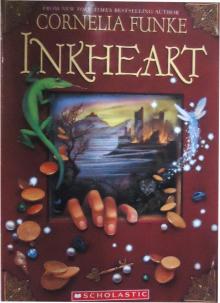 Inkheart
Inkheart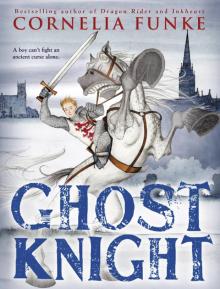 Ghost Knight
Ghost Knight Inkspell
Inkspell The Golden Yarn
The Golden Yarn Fearless
Fearless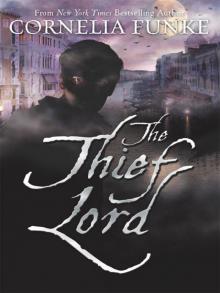 The Thief Lord
The Thief Lord The Griffin's Feather
The Griffin's Feather Igraine the Brave
Igraine the Brave Reckless
Reckless When Santa Fell to Earth
When Santa Fell to Earth Dragon Rider
Dragon Rider Living Shadows
Living Shadows Lilly and Fin: A Mermaid's Tale
Lilly and Fin: A Mermaid's Tale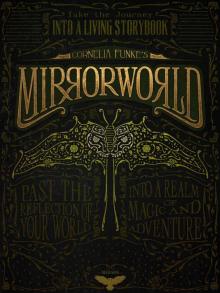 The MirrorWorld Anthology
The MirrorWorld Anthology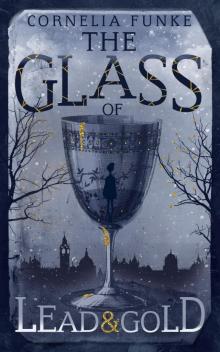 The Glass of Lead and Gold
The Glass of Lead and Gold Ghosthunters and the Incredibly Revolting Ghost
Ghosthunters and the Incredibly Revolting Ghost Ghosthunters and the Totally Moldy Baroness!
Ghosthunters and the Totally Moldy Baroness! Reckless II
Reckless II Griffin's Feather
Griffin's Feather Emma and the Blue Genie
Emma and the Blue Genie Ghosthunters and the Gruesome Invincible Lightning Ghost
Ghosthunters and the Gruesome Invincible Lightning Ghost Ghosthunters and the Muddy Monster of Doom!
Ghosthunters and the Muddy Monster of Doom! Inkheart ti-1
Inkheart ti-1 The Pirate Pig
The Pirate Pig Inkspell ti-2
Inkspell ti-2 The Petrified Flesh
The Petrified Flesh Inkdeath ti-3
Inkdeath ti-3 Ruffleclaw
Ruffleclaw Lilly and Fin
Lilly and Fin